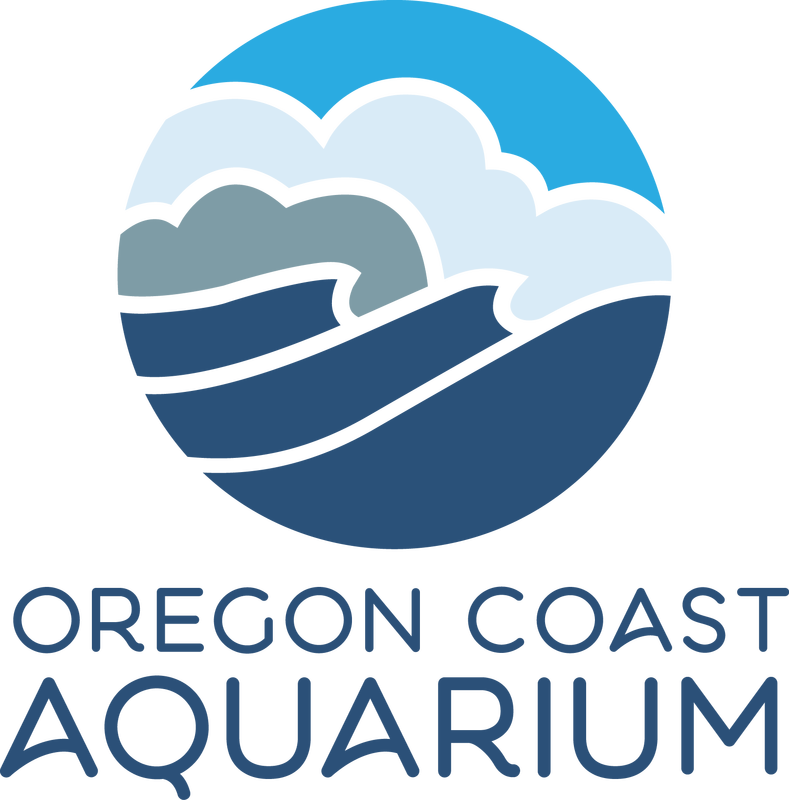EXPLORE > PLANTS > PHAEOPHYTES
Nereocystis luetkeana
Bull Kelp is the dominant species in offshore kelp forests along the Oregon Coast. This species prefers colder water with a temperature range of 39° to 59° F (3.9–15°C). Kelp have similar but not identical physical structure to terrestrial plants. For example, a holdfast anchors them to the ocean floor and is similar in appearance to a terrestrial plant’s root system but does not collect nutrients like real roots would. They also have a stem-like structure called a stipe from which leaf-like blades stretch out through the water, absorbing nutrients and sunshine. Below the blades is an air-filled bladder called a float. As the name indicates, the float helps hold the plant upright in the water. There’s one other way these large algae differ from terrestrial plants – they don’t produce flowers, but rather reproduce by releasing swimming spores into the water.
Although bull kelp is a type of marine brown algae (Phylum Phaeophyta), it often appears green in color and can be frequently found washed up on beaches, especially after winter storms.
Aside from the important role it plays in marine ecosystems, bull kelp is also harvested and used by people as an edible seaweed. Kelp beds are also important to both commercial and recreational fisheries because of the number and diversity of fish which live in these habitats.
Distribution
Bull kelp can be found growing in large offshore forests all along the west coast of North America and is the dominant species north of Santa Cruz, California. When it grows alongside giant kelp (Macrocystis pyrifera), bull kelp will form a forest understory.
Conservation Status
Bull kelp is at high risk of endangerment. Kelps require specific water and temperature conditions to thrive. Often, mass die-offs of the plants are observed during El Niño events. As the world ocean continues to warm due to global climate change, a decline in the range and abundance of bull kelp is expected. Because all kelps require clean, clear water to thrive, coastal runoff and pollution are also endangering the species.
Nereocystis luetkeana
Bull Kelp is the dominant species in offshore kelp forests along the Oregon Coast. This species prefers colder water with a temperature range of 39° to 59° F (3.9–15°C). Kelp have similar but not identical physical structure to terrestrial plants. For example, a holdfast anchors them to the ocean floor and is similar in appearance to a terrestrial plant’s root system but does not collect nutrients like real roots would. They also have a stem-like structure called a stipe from which leaf-like blades stretch out through the water, absorbing nutrients and sunshine. Below the blades is an air-filled bladder called a float. As the name indicates, the float helps hold the plant upright in the water. There’s one other way these large algae differ from terrestrial plants – they don’t produce flowers, but rather reproduce by releasing swimming spores into the water.
Although bull kelp is a type of marine brown algae (Phylum Phaeophyta), it often appears green in color and can be frequently found washed up on beaches, especially after winter storms.
Aside from the important role it plays in marine ecosystems, bull kelp is also harvested and used by people as an edible seaweed. Kelp beds are also important to both commercial and recreational fisheries because of the number and diversity of fish which live in these habitats.
Distribution
Bull kelp can be found growing in large offshore forests all along the west coast of North America and is the dominant species north of Santa Cruz, California. When it grows alongside giant kelp (Macrocystis pyrifera), bull kelp will form a forest understory.
Conservation Status
Bull kelp is at high risk of endangerment. Kelps require specific water and temperature conditions to thrive. Often, mass die-offs of the plants are observed during El Niño events. As the world ocean continues to warm due to global climate change, a decline in the range and abundance of bull kelp is expected. Because all kelps require clean, clear water to thrive, coastal runoff and pollution are also endangering the species.





